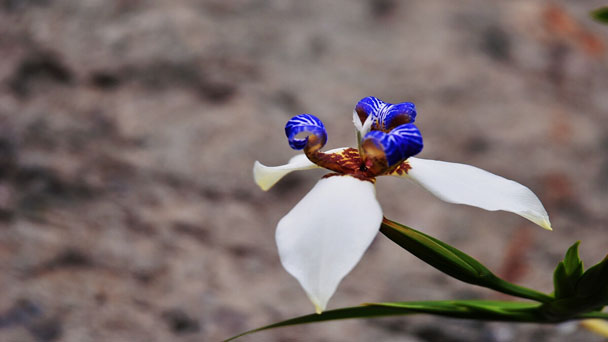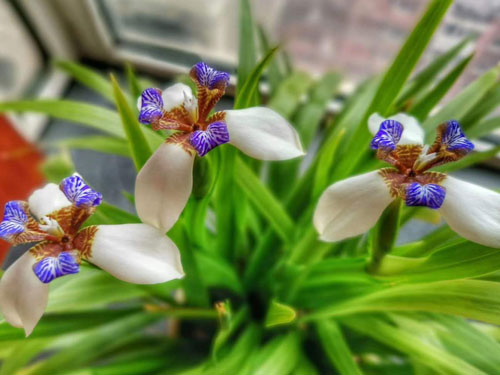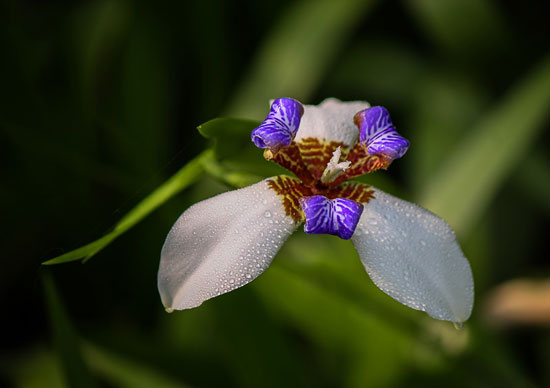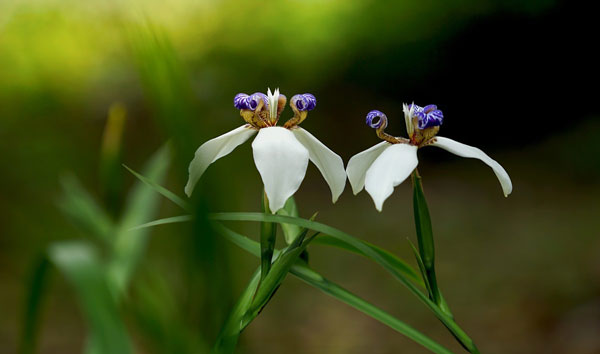Walking Iris: Grow & Care for Neomarica gracilis
Written by Iris
Sep 07 2021

Walking Iris (Neomarica gracilis) is easy to plant and has a strong tolerance for the environment. It can grow well in full daylight, half daylight, bright scattered light, but if you want the leaves to grow and flourish, you should use half daylight or shade The environment is better. Therefore, walls, under the shade of trees, or indoor bright places are ideal places for cultivation. Here is the detailed guide to grow and care for Walking Iris (Neomarica gracilis).



How to Propagate Walking Iris PlantWalking Iris Propagation with SeedsWalking Iris Propagation with Stem CuttingsWalking Iris Propagation with DivisionHow to Grow & Care for Walking Iris PlantWalking Iris Care - LightWalking Iris Care - SoilWalking Iris Care - WaterWalking Iris Care - Temperature & HumidityWalking Iris Care - FertilizerWalking Iris Care - PruningWalking Iris Care - Pests & DiseasesVarieties of Walking Iris PlantWalking Iris Plant FAQIs the Walking Iris Plant Toxic?Is the Walking Iris Plant Considered Invasive?
How to Propagate Walking Iris Plant
Walking Iris Propagation with Seeds
Walking iris (Neomarica gracilis) usually begins blooming during its first year or second year. Flowers left on the plant will produce seed for use in propagation. Allow the pods to dry on the plant. Break the dried pods open to harvest the seed. Sow the seed as soon as possible and provide plenty of water.Walking Iris Propagation with Stem Cuttings
The walking Iris plant propagates itself by producing miniature plants on the flower stalk. The miniature plants grow aerial roots that take root quickly once they touch the ground. When aerial roots form, pin the plant down on top of a small pot of moist soil. Allow it to take root while still attached to the mother plant. Keep the soil moist until the roots take hold, and cut the plant free. Allow it to become established before re-potting or transplanting.Walking Iris Propagation with Division
Transplanting walking iris plant isn't difficult, nor is walking iris division. Just dig around the circumference of the plant with a garden fork or spade, prying upward as you go to loosen the roots. Lift the clump carefully and brush off loose soil so you can see the roots and rhizomes, then pull the plant carefully into sections. Each section should have several healthy roots and at least four or five leaves. Discard any old, nonproductive sections. walking iris plant is happiest in a location with well-drained soil and partial sunlight or broken, filtered light. Don’t bother adding compost or manure to the soil, but a handful of balanced garden fertilizer will enhance plant growth. If your walking iris plant is growing in a container, remove the plant carefully from the pot, then divide it and plant the divisions in a pot filled with fresh potting mix. Be sure the pot has a drainage hole in the bottom.
How to Grow & Care for Walking Iris Plant
Walking Iris Care - Light
Walking irises (Neomarica gracilis) grow best in partially shady sites where they get four to six hours of direct morning sun. Most will also thrive with two to four hours of morning sun, or in dappled or bright shade. The “Regina” cultivar (Neomarica caerulea “Regina”) can be grown in sunnier sites with six or more hours of direct sun. It is also a larger plant, growing 4 to 5 feet tall. Place container-grown walking irises in a bright area next to a south-, east- or west-facing window.Walking Iris Care - Soil
Walking iris plants will grow in loamy, sandy or clay soils but prefer an acidic soil. You can plant them where soil tends to stay moist. Plant the rhizomes 2 inches below the soil surface or, if they have leaves, at the same depth they were growing previously. Space walking iris plants 2 to 3 feet apart to give them room to spread. Container-grown plants will thrive in either peat- or soil-based potting mixes. The potting mix should contain sand, perlite and vermiculite for good drainage. Use a deep, 8-inch-diameter or larger container for each plant. Repot them every two to three years.Walking Iris Care - Water
Bring soil to a state of visual dryness between waterings. Make sure the potting soil is well drained and there is good drainage in the container. they are potted in. When watering Walking Iris plant, thoroughly saturate the soil until a little water runs out of the bottom of the pot. Growing in a clay pot will help maintain a healthy root system.Walking Iris Care - Temperature & Humidity
Average humidity – approximately 40-50% relative humidity and average room temperatures of 60° – 75 ° degrees Fahrenheit (15° – 24° C) are preferred. Walking Iris plant is hardy in USDA Zones 9-11. You can scoot your container outdoors for the summer, if you want -- just keep it in full shade outside.Walking Iris Care - Fertilizer
A balanced Walking Iris plant fertilizer should be applied in March, June and September, diluting 1 tablespoon in 1 gallon of water. Container-grown plants should be watered when the top of the potting soil begins to dry. They should be given a balanced water-soluble houseplant fertilizer diluted at a rate of 1 teaspoon per 1 gallon of water once each week. Read the label on the product you buy because instructions vary.Walking Iris Care - Pruning
Simply groom the plant by removing the flowers and trimming the stems once the flowering season has ended and the fresh plants have established a healthy root system.Walking Iris Care - Pests & Diseases
Walking Iris plant does not encounter any noteworthy pest or disease conditions.
Varieties of Walking Iris Plant
Though there are several species of walking Iris plant available, the two most popular varieties used in the garden are Neomarica Gracilis, neomarica Caerulea and Neomarica Northiana. neomarica caerulea or Giant apostle’s iris has purplish blue flowers which are 3-4 inches wide and has wide leaves. This is a drought tolerant and salt tolerant variety. Neomarica Northiana has white petals with tiger-like stripes, which open only in the morning.
Walking Iris Plant FAQ
Is the Walking Iris Plant Toxic?
All parts of Walking Iris plant are poisonous and may cause gastrointestinal problems. Kids and pets should not be allowed to ingest Neomarica.Is the Walking Iris Plant Considered Invasive?
Walking Iris plant has invasive potential. It grows naturally along the roadsides and wastelands and spreads over vast areas. Listed as an invasive plant in Cuba, it produces rapidly in dense colonies, which is detrimental for the production of vegetation and other native plant species.Latest Updated
- Benefits of Bugleweed - 7 Science-backed Health Benefits
- Bugleweed Dangers & Side Effects - Is It Poisonous?
- How to Plant Evergreen Trees - What You Should Know
- When to Plant Evergreens - Grow Guide for Evergreen Trees
- 12 Wonderful Evergreen Shrubs for Your Garden
- 12 Popular Evergreen Plants with Pictures for Beginners
- When And How To Prune A Lilac Bush Like a Pro
- How to Grow & Care for Lilac Vine (Hardenbergia Violacea)
- Japanese Lilac Tree (Syringa Reticulata) Care & Propagation Guide
- Shumard Oak Pros and Cons - What to Know
Popular Articles
- Winter maintenance of Antirrhinum Majus
- How to Grow Terminalia Mantaly Tree
- How to Grow and Care for Crossostephium Chinense
- How to grow Antirrhinum Majus in spring
- Peristeria Elata (Dove Orchid) Profile: Info & Care Guide
- Underwatered Snake Plant (Sansevieria Trifasciata) - Signs And How To Fix
- How to Care for Brazilian Jasmine Plant (Mandevilla Sanderi)
- How to Grow & Care for Graptopetalum Purple Delight in Summer
- Rosa Chinensis (China Rose): Plant Growing & Care Tips
- How to Care for Baby Sun Rose (Aptenia Cordifolia)